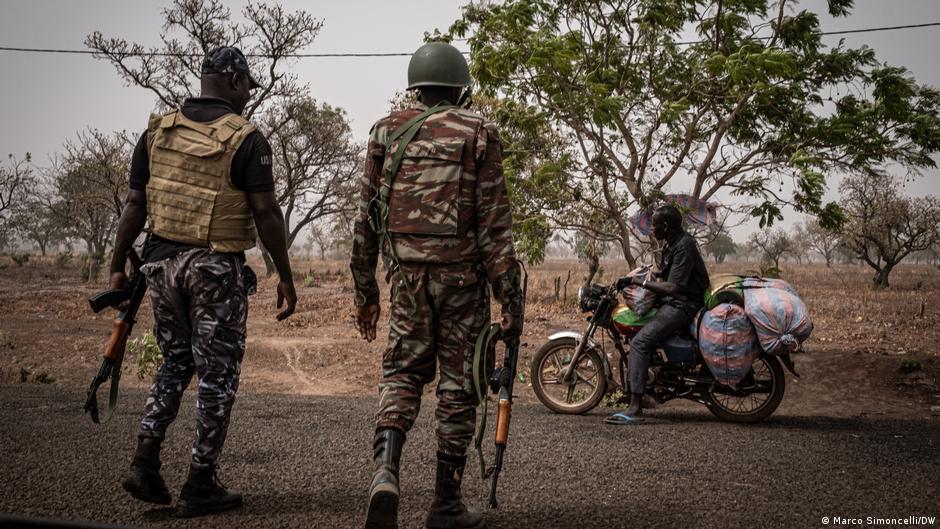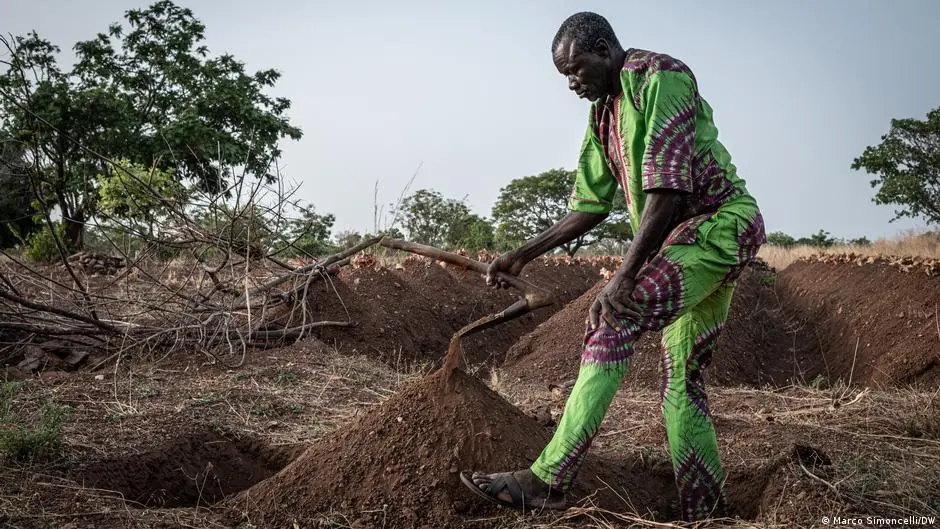
A version of this report, written in Italian, is available on the website for LifeGate.
In Benin's mountainous Atakora Department in the country's northwest, the towns of Tanguieta and Porga are divided by three checkpoints. Today, this 60-kilometer stretch of road is frequently patrolled by armored vehicles: Between December 2021 and July 2022, Beninese security forces were attacked here four times by extremists.
The attackers likely belonged to the Group to Support Islam and Muslims, or JNIM, now widely considered to be the most powerful militant jihadist group in the Sahel region. Ambushes and attacks with improvised explosives have led to several military casualties. But locals, too, are growing increasingly afraid as the security situation continues to unravel.

As a nonprofit journalism organization, we depend on your support to fund more than 170 reporting projects every year on critical global and local issues. Donate any amount today to become a Pulitzer Center Champion and receive exclusive benefits!
"We have experienced moments of great fear," says Igor Kassah, the only Catholic priest in Porga who arrived here in September last year. Because of the security situation, he is only allowed to hold mass on Sundays, with all other religious activities forbidden for the time being. Still, he's determined to remain in Porga.
"We see armored vehicles everywhere. We are not used to it. Usually, we see this situation in countries at war. We see it on television, not here," he added.

Porga is currently under a curfew from 7 p.m., with no one permitted to leave town after dark. Several motorcycles remain parked outside the police station. The police chief believes they belong to jihadists. As tensions rise, so does the level of suspicion within the community.
"We distrust each other, we often talk about infiltrators," says Kassah.
"As a pastor, I cannot leave these people — at least those who have chosen to stay."

Benin's strategic significance
Benin's northern regions have endured an increasing number of attacks by Islamic militias since 2018. A security crisis which began in the Sahel over a decade ago has now moved further south. Cross-border attacks are becoming increasingly common as part of the jihadists' regional repositioning strategy, according to the Institute for Security Studies and the Africa Center for Strategic Studies.
"In these cross-border areas, we are faced with 'bridges' between different criminal identities," explains Oswald Padonou, the President of the Beninese Association of Strategic Studies and Security. "There are passers-by and traffickers and even the abduction industry in northwest Nigeria bordering Benin is certainly not insignificant."

Benin — in particular its northern regions — is strategically significant for a fresh jihadist advance for a number of reasons. On the one hand, Beninese security forces do not appear sufficiently organized or equipped to effectively respond to the threat.
The geography of the area also helps facilitate jihadist and criminal activities. An immense patchwork of nature reserves stretches over a territory of more than 32,000 square kilometers, connecting Benin, Burkina Faso and Niger, aiding the uncontrolled transit of goods and people across borders.
According to Padanou, the scale of the looming crisis was initially underestimated in Benin.
"At first, it was thought to be a phenomenon of transiting jihadists in the border areas," he says. "Today, we're talking about micro-cells and recruitment in the north of Benin … The Islamic extremist phenomenon has gradually found space in the most marginalized areas."

A perfect storm for extremism
Benin's northern regions are home to the country's poorest. Many towns and communities lack basic infrastructure and services, including hospitals and schools.
The area is also already experiencing the harsh effects of climate change. According to the Climate Service Center Germany, rainfall has decreased drastically, while soil erosion is increasing alongside more frequent periods of drought. Desertification and deforestation is also intensifying: Global Forest Watch estimates that Benin has lost more than 20% of its forests since 2000.
These factors likely play a role in the rise of inter-community conflicts. Home to approximately 500 ethnic Waama people, the village of Boribansifa became the scene of violent clashes between farmers and semi-nomadic Fulani herders in January.

"Fulani have always crossed farmers' land," explains Simplice Mangopa, a local farmer and member of the village council. "There were agreements to manage our relationships. Things changed when [the Fulani] started settling here."
Mangopa says he watched helplessly as growing tensions over land disputes turned into fierce fighting.
"We the elders tried to stop the youth who wanted to destroy the Fulani's houses," he says. "They didn't listen to us. A boy died and one of my children was shot."
The clashes in Boribansifa are not an isolated incident. According to a study by US-based analysis group, ACLED and the Dutch think tank, Clingendael, violent incidents have increased by more than 30% in Benin since 2017 especially in the central and northern regions.
The pressures of poverty and climate change have created shifting dynamics in Benin's most vulnerable region — dynamics which jihadist groups are now trying to exploit.










